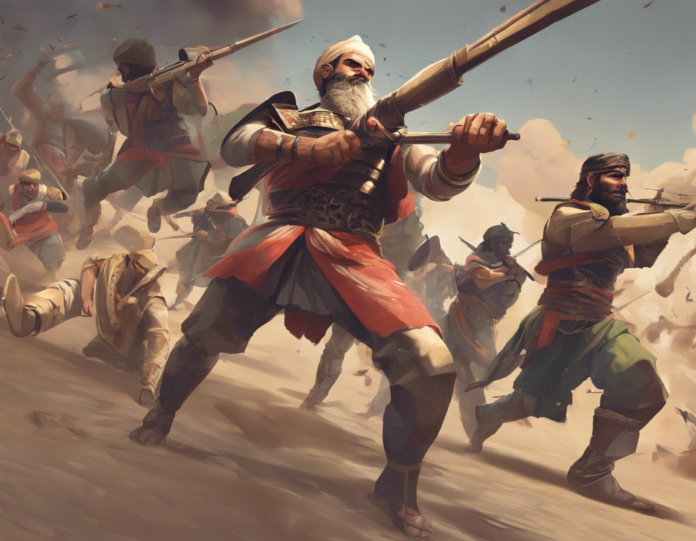The Indus Valley civilization, one of the world’s earliest urban civilizations, thrived in the vast plains of the Indus River in what is now modern-day Pakistan and northwest India from around 3300 BCE to 1300 BCE. Known for its advanced urban planning, sophisticated drainage systems, and intricate trade networks, the Indus Valley civilization was a powerhouse of ancient India. However, this civilization did not exist in isolation, and it was constantly interacting with neighboring regions, sometimes through peaceful trade and at other times through conquest and conflict.
Origins of Conflict
The region surrounding the Indus River was a fertile land that attracted various tribal groups and early civilizations. As these groups expanded and vied for resources, conflicts inevitably arose. The Indus Valley civilization itself was not immune to these conflicts. While the civilization flourished due to its economic prosperity and technological advancements, it also faced external threats from nomadic tribes, invaders, and neighboring kingdoms.
Invasion of the Aryans
One of the most well-known conflicts in ancient India was the invasion of the Aryans, a group of Indo-European nomadic herders, into the Indian subcontinent around 1500 BCE. The Aryans, believed to have originated from the steppes of Central Asia, brought with them their chariots, iron technology, and most significantly, their Vedic culture. The clash between the Indus Valley civilization and the invading Aryans marked a significant turning point in the history of ancient India.
The Battle Royale
The interaction between the Indus Valley civilization and the Aryans was not merely a clash of two civilizations but a complex process of cultural assimilation, intermarriage, trade, and warfare. The Indus Valley cities were eventually abandoned, and a new era began with the emergence of early Vedic society in the Gangetic plains. The Aryans established powerful kingdoms and chieftaincies, engaging in fierce battles for supremacy and territorial control.
Epic Battles and Empires
The period following the Aryan invasion saw the rise of several powerful empires and kingdoms in ancient India, each vying for dominance over the Indus region and beyond. The Mahabharata, one of the two major Sanskrit epics of ancient India, narrates the legendary Kurukshetra War fought between the Pandavas and the Kauravas for control of the kingdom of Hastinapura. This epic battle, with its intricate plot and moral dilemmas, reflects the complex power struggles of ancient Indian society.
Mauryan Empire and Ashoka
One of the most illustrious empires in ancient India was the Mauryan Empire, founded by Chandragupta Maurya in 322 BCE. Under the leadership of Emperor Ashoka, the Mauryan Empire expanded its territory across the Indian subcontinent, bringing a large part of the region under a centralized imperial rule. Ashoka, known for his conversion to Buddhism after the bloody conquest of Kalinga, promoted non-violence, religious tolerance, and social welfare in his empire.
Frequently Asked Questions
- What led to the decline of the Indus Valley civilization?
-
The exact reasons for the decline of the Indus Valley civilization are still debated among historians, but factors such as environmental changes, natural disasters, and invasions by nomadic tribes are believed to have played a role.
-
Were the Aryans solely responsible for the decline of the Indus Valley civilization?
-
While the Aryan invasion is often cited as a contributing factor to the decline of the Indus Valley civilization, it is important to note that the civilization was already in a state of decline before the arrival of the Aryans.
-
How did the Mauryan Empire impact ancient Indian history?
-
The Mauryan Empire, particularly under Emperor Ashoka, left a lasting legacy in ancient Indian history through its centralized administration, promotion of Buddhism, and efforts towards social welfare and religious tolerance.
-
What role did warfare play in ancient Indian society?
-
Warfare was a significant aspect of ancient Indian society, shaping political structures, cultural exchanges, and the rise and fall of empires. Battles were fought for territorial control, resources, and power.
-
How did the epic battles of ancient India influence cultural and literary developments?
-
The epic battles of ancient India, such as the Mahabharata, not only reflected the political and social dynamics of the time but also served as literary masterpieces that inspired generations and shaped cultural beliefs and values.
-
Which other ancient kingdoms competed for control over the Indus region?
- Apart from the Mauryan Empire and the Aryans, various other ancient kingdoms such as the Gupta Empire, the Kushan Empire, and the Vakataka dynasty also competed for control over the Indus region, leaving a rich tapestry of history and conflicts in the region.
Conclusion
The region surrounding the Indus River has been a battleground of civilizations, empires, and kingdoms throughout ancient Indian history. The clash between the Indus Valley civilization and the invading Aryans, the epic battles of the Mahabharata, and the imperial conquests of the Mauryan Empire all exemplify the contest for supremacy and dominance in this pivotal region. While conflict and warfare have been defining features of the region, they have also led to cultural exchanges, technological advancements, and the rise and fall of empires that have left an indelible mark on the history of ancient India.












